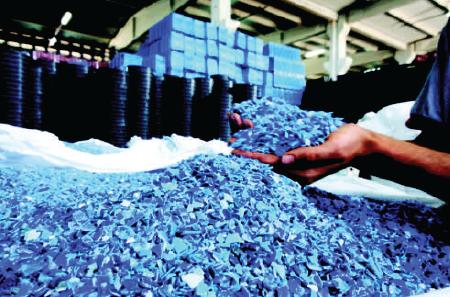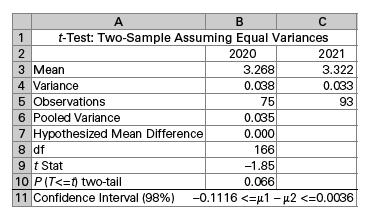Seitz LLC, an ISO 9001-2008 certified organization, is a leading designer and manufacturer of thermoplastic motion control
Question:
Seitz LLC, an ISO 9001-2008 certified organization, is a leading designer and manufacturer of thermoplastic motion control systems and components and an industry leader in plastics and gear trains. Founded in 1949 by the late Karl F. Seitz, the company began as a small tool-making business and grew slowly. In the late 1960s, the company expanded its services to include custom injection moulding. As its customer base grew to include leading printer manufacturers, Seitz developed and patented a proprietary line of perforated-form-handling tractors. Utilizing its injection-moulding technology, the company engineered an all- plastic tractor called Data Motion, which replaced costly metal versions. By the late 1970s, business was booming, and Data Motion had become the worldwide industry leader. In the 1980s, foreign competition entered the business equipment market, and many of Seitz’s customers relocated or closed shop. The ripple effect hit Seitz as sales declined and profits eroded. Employment at the company dropped from a high of 313 in 1985 to only 125 in 1987. Drastic changes had to be made at Seitz. To meet the challenge in 1987, Seitz made a crucial decision to change the way it did business. The company implemented a formal five-year plan with measurable goals called “World-Class Excellence Through Total Quality.” Senior managers devoted many hours to improving employee training and involvement. New concepts were explored and integrated into the business plan. Teams and programs were put into place to immediately correct deficiencies in Seitz’s systems that were revealed in customer satisfaction surveys. All employees, from machine operators to accountants, were taught that quality means understanding customers’ needs and fulfilling them correctly the first time. Once the program started, thousands of dollars in cost savings and two new products generating almost $1 million in sales resulted. Annual sales grew from $10.8 million in 1987 to $19 million in 1990. Seitz’s customer base expanded from 312 in 1987 to 550 at the end of 1990.In the 1990s, Seitz continued its steady growth. By 1999, Seitz was shipping products to 28 countries, and customers included Xerox, Hewlett-Packard, Canon, U.S. Tsubaki, and many more worldwide. By 1998, sales topped the $30-million mark. In January 2000, the company established Seitz Motion Control Systems Co., Ltd., in Changzhou, China, about 250 km northwest of Shanghai, to provide product and tooling design engineering, sourcing and supply chain management services, and contract manufacturing. In 2011, the former Seitz Corporation was purchased by company management and the principals of private investor firm Andlinger & Company, Inc., to become Seitz LLC. The Seitz LLC headquarters is located in Torrington, Connecticut, with over 150 associates, moulding machines ranging in size from about 17 tonnes to 770 tonnes, an in-house tooling department, and a corporate staff. Seitz Motion Control Systems Co., Ltd., is a technical services centre providing both product and tooling design engineering and sourcing and supply chain management services. While the primary core competency of Seitz is rotary and linear-motion control, making it an industry leader in plastics and gear trains, Seitz offers a full range of product design and tooling services.

Discussion1. Seitz’s list of several hundred business-to-business customers continues to grow. Managers would like to know whether the average dollar amount of sales per transaction per customer has changed from last year to this year. Suppose company accountants sampled 20 customers randomly from last year’s records and determined that the mean sales per customer were $2,300, with a standard deviation of $500. They sampled 25 customers randomly from this year’s files and determined that the mean sales per customer for this sample were $2,450, with a standard deviation of $540. Analyze these data and summarize your findings for the managers. Explain how this information can be used by decision-makers. Assume that sales per customer are normally distributed.2. One common approach to measuring a company’s quality is through the use of customer satisfaction surveys. Suppose in a random sample Seitz’s customers are asked whether the plastic tractor produced by Seitz has outstanding quality (yes or no). Assume Seitz produces these tractors at two different plant locations and that the tractor customers can be divided according to where their tractors were manufactured. Suppose a random sample of 45 customers who bought tractors made at plant 1 results in 18 saying the tractors have excellent quality and a random sample of 51 customers who bought tractors made at plant 2 results in 12 saying the tractors have excellent quality. Use a confidence interval to express the estimated difference in population proportions of excellent ratings between the two groups of customers. Does it seem to matter which plant produces the tractors in terms of the quality rating received from customers? What would you report from these data?
3. Suppose the customer satisfaction survey included a question on the overall quality of Seitz measured on a five-point scale, with 1 indicating low quality and 5 indicating high quality. Company managers monitor the figures from year to year to help determine whether Seitz is improving customers’ perception of its quality. Suppose random samples of the responses from 2020 customers and 2021 customers are taken and analyzed on this question, and the following analysis of the data results. Help managers interpret this analysis so that comparisons can be made between 2020 and 2021. Discuss the samples, the statistics, and the conclusions. 4. Suppose Seitz produces pulleys that are specified to be 50 mm in diameter. A large batch of pulleys is made in week 1 and another is made in week 5. Quality-control people want to determine whether there is a difference in the variance of the diameters of the two batches. Assume that a sample of six pulleys from the week 1 batch results in the following diameter measurements (in millimetres): 51, 50, 48, 50, 49, 51. Assume that a sample of seven pulleys from the week 5 batch results in the following diameter measurements (in millimetres): 50, 48, 48, 51, 52, 50, 52. Conduct a test to determine whether the variance in diameters differs between these two populations. Why would the quality control people be interested in such a test? What results of this test would you relate to them? What about the means of these two batches? Analyze these data in terms of the means and report on the results. Assume that pulley diameters are normally distributed in the population.
4. Suppose Seitz produces pulleys that are specified to be 50 mm in diameter. A large batch of pulleys is made in week 1 and another is made in week 5. Quality-control people want to determine whether there is a difference in the variance of the diameters of the two batches. Assume that a sample of six pulleys from the week 1 batch results in the following diameter measurements (in millimetres): 51, 50, 48, 50, 49, 51. Assume that a sample of seven pulleys from the week 5 batch results in the following diameter measurements (in millimetres): 50, 48, 48, 51, 52, 50, 52. Conduct a test to determine whether the variance in diameters differs between these two populations. Why would the quality control people be interested in such a test? What results of this test would you relate to them? What about the means of these two batches? Analyze these data in terms of the means and report on the results. Assume that pulley diameters are normally distributed in the population.
Step by Step Answer:

Business Statistics For Contemporary Decision Making
ISBN: 9781119577621
3rd Canadian Edition
Authors: Ken Black, Ignacio Castillo





